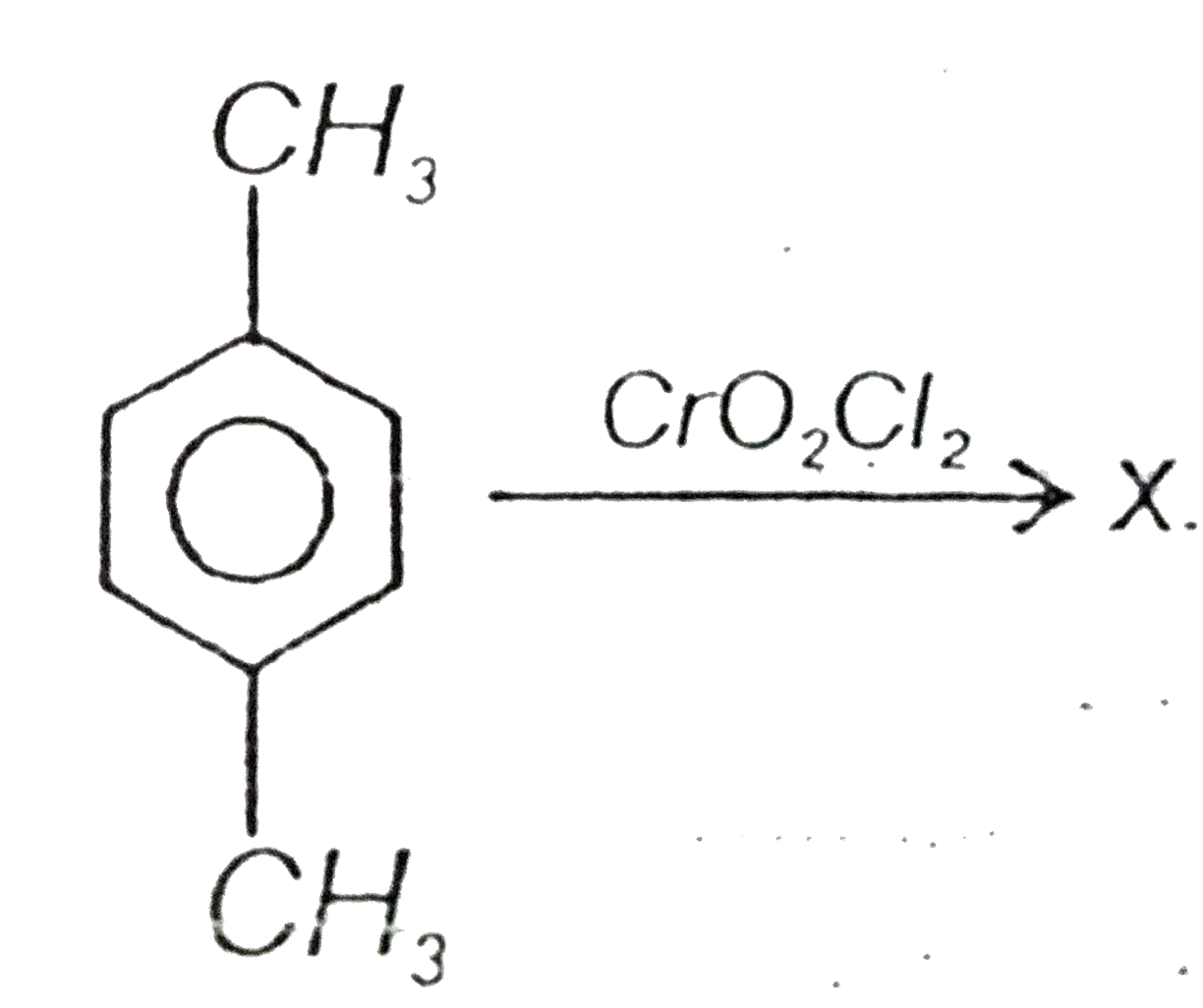Complete the following reaction sequence :
CH3−O∣∣C−CH3(i)CH3MgBr−−−−−−−−→(ii)H2O(A)Na metal−−−−→ether(B)CH3−Br−−−−−→(C)
To complete the reaction sequence provided in the question, we will analyze each step carefully.
Step 1: Reaction of Acetone with Grignard Reagent
The starting compound is acetone, which has the structure CH3C(=O)CH3. When acetone reacts with the Grignard reagent CH3MgBr, the nucleophilic carbon of the Grignard reagent attacks the electrophilic carbon of the carbonyl group in acetone. This results in the formation of a tertiary alcohol.
Reaction:
CH3C(=O)CH3+CH3MgBrH2O−−→A
Product A:
The product A will be a tertiary alcohol, specifically (CH3)2C(OH)CH3 (2-propanol).
Step 2: Reaction with Sodium Metal in Ether
Next, product A (the tertiary alcohol) is treated with sodium metal in an ether solvent. Sodium reacts with the alcohol to form an alkoxide and hydrogen gas. The reaction involves the transfer of electrons from sodium to the alcohol, resulting in the formation of a radical anion.
Reaction:
(CH3)2C(OH)CH3+Naether−−−→B
Product B:
The product B will be a radical anion, specifically (CH3)2C−(CH3) with the release of hydrogen gas H2.
Step 3: Reaction with Methyl Bromide
Finally, product B reacts with methyl bromide CH3Br. In this step, the radical anion acts as a nucleophile and performs an SN2 reaction, attacking the carbon of the methyl bromide and displacing the bromide ion.
Reaction:
B+CH3Br→C
Product C:
The final product C will be (CH3)3CBr (tert-butyl bromide).
Summary of Products:
- Product A: (CH3)2C(OH)CH3 (2-propanol)
- Product B: (CH3)2C−(CH3) (radical anion)
- Product C: (CH3)3CBr (tert-butyl bromide)
The starting compound is acetone, which has the structure CH3C(=O)CH3. When acetone reacts with the Grignard reagent CH3MgBr, the nucleophilic carbon of the Grignard reagent attacks the electrophilic carbon of the carbonyl group in acetone. This results in the formation of a tertiary alcohol.
CH3C(=O)CH3+CH3MgBrH2O−−→A
The product A will be a tertiary alcohol, specifically (CH3)2C(OH)CH3 (2-propanol).
Next, product A (the tertiary alcohol) is treated with sodium metal in an ether solvent. Sodium reacts with the alcohol to form an alkoxide and hydrogen gas. The reaction involves the transfer of electrons from sodium to the alcohol, resulting in the formation of a radical anion.
(CH3)2C(OH)CH3+Naether−−−→B
The product B will be a radical anion, specifically (CH3)2C−(CH3) with the release of hydrogen gas H2.
Finally, product B reacts with methyl bromide CH3Br. In this step, the radical anion acts as a nucleophile and performs an SN2 reaction, attacking the carbon of the methyl bromide and displacing the bromide ion.
B+CH3Br→C
The final product C will be (CH3)3CBr (tert-butyl bromide).
- Product A: (CH3)2C(OH)CH3 (2-propanol)
- Product B: (CH3)2C−(CH3) (radical anion)
- Product C: (CH3)3CBr (tert-butyl bromide)
Topper's Solved these Questions
- BOOK - NCERT EXEMPLAR ENGLISHCHAPTER - ALDEHYDE, KETONES AND CARBOXYLIC ACIDSEXERCISE - Long Answer Type Questions4videos
ALDEHYDE, KETONES AND CARBOXYLIC ACIDS
- BOOK - NCERT EXEMPLAR ENGLISHCHAPTER - ALDEHYDE, KETONES AND CARBOXYLIC ACIDSEXERCISE - Long Answer Type Questions4videos
ALDEHYDE, KETONES AND CARBOXYLIC ACIDS
- BOOK - NCERT EXEMPLAR ENGLISHCHAPTER - ALCOHOLS, PHENOLS AND ETHERSEXERCISE - All Questions74videos
ALCOHOLS, PHENOLS AND ETHERS
- BOOK - NCERT EXEMPLAR ENGLISHCHAPTER - AMINESEXERCISE - LONG ANSWER3videos
AMINES
Similar Questions
Complete the following reaction CH3−C∣CH3=CH−CH3H2,Ni−−−→?
View SolutionIn the given reaction C6H5−O∣∣C−CH3(i)C2H8MgBr−−−−−−−−→(ii)H2O/H+(X) X will be
View SolutionComplete the following reactions
(i) CH3−O∣∣C−CH3CH3MgBr−−−−−→ether(dry)AH3O+−−−→B (ii) CH3−CH2−CH2−CHONi/H2−−−→AView SolutionComplete the following reactions
CH3CH=CH2mCPBA−−−−→AC2H5MgBr−−−−−−→H3O+BView SolutionComplete the following reactions:
PhCHO+CH3NO2ΘOH−−→Δ(A)View SolutionComplete the reaction :
CH3−CH∣CH3−O−CH2−CH3HI−−→View SolutionComplete the following
(i) CH3−CH3∣C∣CH3−OHheat−−−→H2SO4?O3−−−−−−−→(Ozonolysis)H2,Ni−−−→?View SolutionCH3−CH2−O∣∣C−OAgBr2−−→CCl4X(1) Li−−−→(2) CuIYCH3−CH2−Br−−−−−−−−−→dry etherZ
View SolutionComplete the following reactions:
(i) CH3−CH3∣C∣Cl−CH2CH3alcKOH−−−−→ΔAO3−−−−−→Zn/H2O(B+C)
(ii) CH3ICH−CH3alcKCN−−−−→A(i)SnCl2/HCl−−−−−−−−−−−−→(ii)H2O.OH.H2O2B
(iii) HCNHCl/AlCl3−−−−−−→A(i)C6H6Δ−−−−−−−−−−→(ii)(H2O)/H−B
(iv) View Solution
View Solution (i)CH3CHO−−−−−−−→(ii)H3O+ (A) HBr−−→ (B)
(i)CH3CHO−−−−−−−→(ii)H3O+ (A) HBr−−→ (B)
The compounds (A) and (B)View Solution

